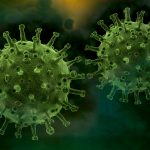COVID-19 (Test Project)
What is COVID-19?
 Coronavirus disease (COVID-19) is an infectious disease caused by a newly discovered coronavirus.
Coronavirus disease (COVID-19) is an infectious disease caused by a newly discovered coronavirus.
Most people infected with the COVID-19 virus will experience mild to moderate respiratory illness and recover without requiring special treatment. Older people and those with underlying medical problems like cardiovascular disease, diabetes, chronic respiratory disease, and cancer are more likely to develop serious illness.
The best way to prevent and slow down transmission is to be well informed about the COVID-19 virus, the disease it causes, and how it spreads. Protect yourself and others from infection by washing your hands or using an alcohol-based rub frequently and not touching your face.
The COVID-19 virus spreads primarily through droplets of saliva or discharge from the nose when an infected person coughs or sneezes, so it’s important that you also practice respiratory etiquette (for example, by coughing into a flexed elbow).
COVID-19 affects different people in different ways. Infected people have had a wide range of symptoms reported – from mild symptoms to severe illness.
Symptoms may appear 2-14 days after exposure to the virus. People with these symptoms may have COVID-19:
- Fever or chills
- Cough
- Shortness of breath or difficulty breathing
- Fatigue
- Muscle or body aches
- Headache
- New loss of taste or smell
- Sore throat
- Congestion or runny nose
- Nausea or vomiting
- Diarrhea
Look for emergency warning signs for COVID-19. If someone is showing any of these signs, seek emergency medical care immediately:
- Trouble breathing
- Persistent pain or pressure in the chest
- New confusion
- Inability to wake or stay awake
- Bluish lips or face
The best way to prevent illness is to avoid being exposed to this virus. Learn how COVID-19 spreads and practice these actions to help prevent the spread of this illness.
To help prevent the spread of COVID-19, everyone should:
- Clean your hands often, either with soap and water for 20 seconds or a hand sanitizer that contains at least 60% alcohol.
- Avoid close contact with people who are sick.
- Put distance between yourself and other people (at least 6 feet).
- Cover your mouth and nose with a mask when around others.
- Cover your cough or sneeze with a tissue, then throw the tissue in the trash.
- Clean and disinfect frequently touched objects and surfaces daily.
- CDC recommends that people wear masks in public settings and when around people outside of their household, especially when other social distancing measures are difficult to maintain.
- Masks may help prevent people who have COVID-19 from spreading the virus to others.
People with COVID-19 should receive supportive care to help relieve symptoms. There is no specific antiviral treatment recommended for COVID-19. (For informational purposes only. Consult your local medical authority for advice.)
Self Care
If you have possible or confirmed COVID-19:
- Stay home except to get medical care.
- Monitor your symptoms carefully. If your symptoms get worse, call your healthcare provider immediately.
- Get rest and stay hydrated. Take over-the-counter medicines, such as acetaminophen, to help you feel better.
- If you have a medical appointment, notify your healthcare provider ahead of time that you have or may have COVID-19.
- Stay in a specific room and away from other people in your home. If possible, use a separate bathroom. If you must be around others, wear a mask.
Medical Treatments
Stay in touch with your doctor. Call before you get medical care.
Your local health authorities may give instructions on checking your symptoms and reporting information.
If someone is showing any of these signs, seek emergency medical care immediately:
- Trouble breathing
- Persistent pain or pressure in the chest
- New confusion
- Inability to wake or stay awake
- Bluish lips or face
